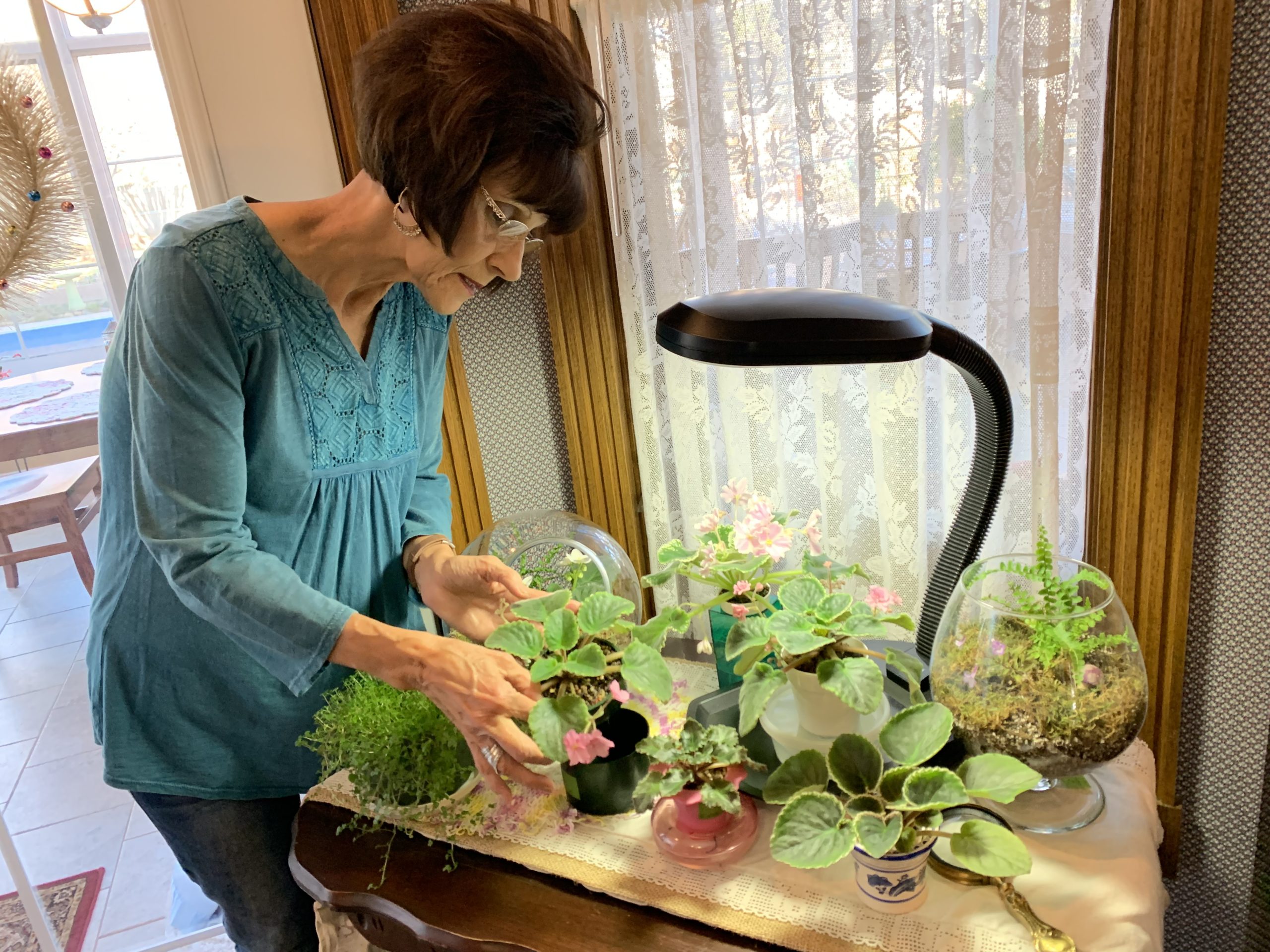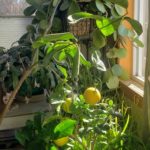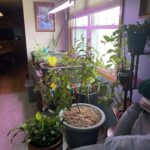Keeping a close connection to nature is vital to daily life, even during the winter. That’s why Wichitan Pam Pavlick pulls out a plant-growing appliance called the AeroGarden and puts it on her kitchen counter to grow lettuce this time of year.
“You really have fun, growing the Black Seeded Simpson and curly varieties you don’t find in the stores,” Pavlick said. “You see those pretty green leaves under those lights, and you can’t wait to have a salad.”
And it’s why Sharon Rutherford, who lives on 10 acres just outside Goddard, keeps her house filled with plants nurtured by shop lights. Many are fragrant herbs she’s growing for her daughter’s winter wedding and for plant sales that will take place at the Sedgwick Extension Education Center this spring.
“It fills my mind,” she said.
It’s also why Cindi McMurray groups sunny citrus plants in a south window of her house in southeast Wichita. Lemons were ready to harvest in December. “I like to keep them near me because they smell so good. There’s nothing better than a grapefruit blossom.”
Yes, it is possible to break through the winter doldrums. Puttering in the dirt does not need to take a seasonal hiatus.
Rutherford has found that she is not a vegetable gardener but that she is very good with herbs. “I have a 15-year-old at home, and grandkids pop in. That’s one thing I can teach them about. They can see them and taste them and smell them, and if we want to cook with them, they’re right there.”
McMurray also grows a variety of plants used in cooking.
“Ginger and turmeric are very easy to grow, and I grow them from roots I get at Sprouts” supermarket, she said. She buries the roots about 2 inches in soil, and keeps the pots in a warm spot. The ginger are beautiful.
“I have lots of basil. It is fun to grow from seed, because every seed germinates. I had 15 varieties of basil last year.”
You can find houseplants at garden centers that don’t require bright light if your residence is not blessed with exposure to bright sunlight. Grow lights are not expensive. Rutherford paid about $20 for a couple of shop lights and had them hung from the ceiling on hooks.
When you’re starting seeds, the lights need to be right on top of the soil, but as the plants get bigger, the light can be raised — as high as 18 inches above the foliage for bigger plants, Rutherford said.
“Plants are much easier than seed,” she said. When gardening indoors, “you mainly have to watch for fungus gnats. I make a neem oil spray.” Just Google do-it-yourself recipes, she advises.
Pavlick grows African violets on plant stands in her basement because she loves to propagate all kinds of varieties from leaves that she exchanges with fellow members of the African Violet Study Club. But “you hate to have to go to the basement to look at them. If they’re looking really pretty, I like to bring them upstairs. And you want to show them off.” She has a table set up in the kitchen with an Agrobrite grow light that looks more like a desk lamp than a grow light and that doesn’t clash with her decor.
Pavlick’s grandmother introduced her to growing African violets. “She grew them in her windows. And you can grow them in windows. Some do better than others.” If you try them in a window, you want to be sure the light is soft and filtered, never direct, she said, and you have to be sure to turn the plants regularly to keep the growth and flowering balanced.
Trying to grow lemons and limes is always a draw for Kansans. But they can be a challenge. McMurray said that the trick is keeping the pot small. She never plants in a pot that’s wider than 12 inches for a citrus plant. She also keeps the soil on the dry side, finding that the plants come back even if she lets them wilt a bit. When she does water, she uses room-temperature well water spiked with fish emulsion. During the summer, she moves the citrus plants outside under a cottonwood tree, out of direct sun. She brings them back indoors before the first freeze, usually in November.
McMurray, Rutherford and Pavlick are all Master Gardeners and all belong to the Herb Society of Southeast Kansas. One way to learn more about gardening year-round is to join a garden club. The social element is a draw.
“It’s really fun because you can get varieties you can never get in stores,” Pavlick said. The African violet group, for example, meets at 1 p.m. the third Friday of every month at Botanica. “We bring our leaves and we share. We’re a small club, but since COVID we have had several join. People are ready to be in clubs again. I see people wanting to get out again.”
Pavlick heads the Master Gardeners’ herb garden at Old Cowtown Museum and is the African violet club’s representative on the Wichita Area Garden Council.
“When I retired, I didn’t expect to be this busy, and I’m a little too busy, but I have made so many friends I couldn’t give it up. I love it so much.”
Framing your views outdoors is another way to extend the gardening year. Being able to watch birds picking at feed or sipping at a heated birdbath, seeing ornamental grasses sway in the wind, or admiring the colors of ornamental kale or cabbage outside a window as you nurse a hot tea are ways to drink in natural beauty in the winter.
“One thing that keeps going outside that is astonishingly beautiful right now is kale,” McMurray said. The colors are so deep right now.”
Contact Annie Calovich at acalovich@att.net.














